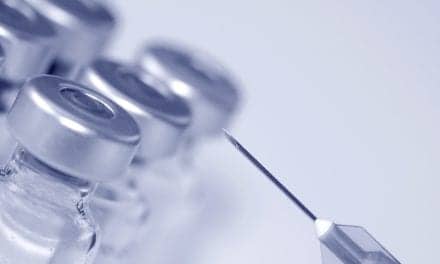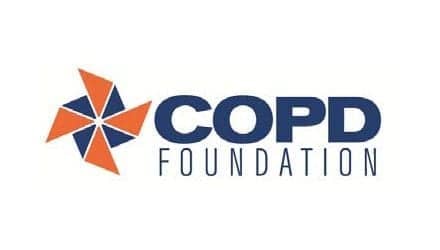Rescue personnel face the risk of life-endangering respiratory damage any time they are dispatched to the scene of a fire, collapsed structure, or toxic spill. For that reason, many emergency response teams now set up a field rehabilitation unit away from the immediate danger zone so that rescuers on the verge of being overcome by noxious gases, dust clouds of pulverized construction materials, or flaming waves of heat can recover before resuming work. When rescuers go to these units, a clinician checks—among other things—their pulse oximetry and carbon monoxide oximetry readings. Routinely, if anyone’s pulse oximetry reading falls below 92%, that person is sidelined and won’t be returned to the fray until his numbers improve.1
Use of pulse oximeters in this arena is a fairly new development. But what it demonstrates is the remarkable proliferation of oximetry devices beyond the confines of hospital walls. Indeed, oximeters are showing up in ever larger numbers these days in nontraditional health care settings such as physician’s offices, clinics, wellness/prevention centers, health fairs, employer-based nursing stations, and even the home.
Back in the hospital, meanwhile, pulse oximetry has emerged as a standard of care in patient monitoring, according to the market research firm of Frost & Sullivan.2 That helps explain why multi-parameter patient monitoring devices sold today almost without exception feature either an attached or integrated pulse-oximetry sensor module.2
“The oximeter is first and foremost used as a safety monitor that provides vigilance in looking after the patient when the caregiver cannot be at the bedside; consequently, clinicians are relying more heavily on their oximeters to be the eyes and ears that alert them when problems arise,” says Paul Mannheimer, PhD, chief scientist for oximeter-maker Nellcor Puritan Bennett, Pleasanton, Calif. “Performance improvements over the past decade have enabled oximeters to monitor with better reliability and accuracy even those patients who have fairly weak respiratory signals and poor perfusion—the sicker types of patients.”
 |
 |
 |
| Paul Mannheimer | Leena Pesu | Cheryl Palange |
Out on the Floors
As such, hospitals find today’s oximetry devices ideally suited for use in operating rooms, postanesthesia care units, ICUs, critical care units, and intermediate care units.
“We’re also seeing oximeters expand into areas where they have not been traditionally or widely used, [for example] in some of the subacute areas, such as the general care floor where patients historically have only been spot-checked for signs of breathing and consciousness,” says Mannheimer.
Leena Pesu, oximetry marketing manager at GE Healthcare in Helsinki, Finland, asserts that oximetry monitoring on general floors is a welcome development because, in those wards, “there is potentially more need for monitoring patients than what the current availability of equipment or workforce allows—and since continuous monitoring in those areas could have an impact on patient safety, it might make sense to increase use there. This has not been studied enough, obviously, but there is a belief that some of the deaths that occur without a care provider present could be avoided if more monitoring were used and slow changes in the patient condition were observed in due course.”
Mannheimer contends that oximetry technology deployed on general floors must of necessity be reliable, sensitive, and specific. To illustrate the point, he describes positions taken recently by the Anesthesia Patient Safety Foundation (APSF), which were articulated during last year’s annual meeting of the American Society of Anesthesiologists. “The foundation conducted an all-day workshop to talk about the monitoring of surgery patients at risk for respiratory depression who have come from the postanesthesia unit and migrated to the general floor; they are being minimally monitored but being given pain medication with patient-controlled analgesia devices,” he tells. “In the current mode of monitoring, the floor nurse comes and checks on the patients once every 2 or 4 hours. These patients are on the floor for 12 to 36 hours after surgery during recovery and on pain medication, but are not continuously monitored. However, occurrences of mortality and morbidity believed associated with respiratory depression can occur if patients receive a little bit too much pain medication, causing shallow breathing or reduced respiration rate and the potential for obstruction of the airway.
“The APSF3 has endorsed a goal that ‘no patient shall be harmed by opioid-induced ventilatory depression in the postoperative period.’ Accordingly, any patient receiving postoperative analgesia should be continuously monitored for adequacy of oxygenation and ventilation. The APSF goal suggests use of respiration rate and/or CO2 monitoring with capnometry, and oxygenation monitoring with a pulse oximeter, or combinations of all of the above. The idea is to catch the event early enough that there could be proper intervention.”
Demand Abroad
There also turns out to be growing demand for pulse oximetry in developing countries, owing to the worldwide prevalence of respiratory diseases.4 Piribo, a global market-assessment organization, reports that asthma and chronic obstructive pulmonary disease (COPD) are the major causes of mortality rates among children and the elderly across the planet (currently, about 300 million people have asthma, while 14.2 million have COPD).4
“The biggest market opportunities abroad,” says GE Healthcare’s Pesu, “would be with the emerging giants such as China and India, which are investing more into health care, as well as other population-rich countries such as Indonesia. However, the biggest need, because of the most severe lack of equipment and most severe humanitarian conditions, is probably in Africa—the countries of Uganda and Ghana, for instance.”
Pesu says her company has noticed anesthetists of the industrialized nations coming more and more to the aid of their colleagues in developing countries. “Product donation may well become a big thing in this area because there are a lot of people and corporations—mine included—interested in doing good and helping improve the quality of health care globally,” she says, adding that GE Healthcare is involved with an initiative of the World Federation of Societies of Anaesthesiologists (WFSA) that “seeks to improve the situation for developing countries through education, promotion of monitoring standards, and the availability of more affordable pulse oximeters suitable to those environments. What we are primarily looking for, jointly with WFSA, is a sustainable change where oximeters get into the hospital and actually stay in use, are used properly, and receive servicing when needed. This, we believe, will be better achieved by creating new solutions specifically designed for these settings, rather than just donating what exists today.”
Doors Wide Open
Three years ago, the patent expired for one of the pulse oximetry industry’s foundational sensor technologies, which opened the doors to a number of newcomer companies wanting a piece of the sensor action.2 Analysts expected this surge of competition would exert downward pressure on oximetry device pricing,2 but things haven’t quite turned out that way.
“We’ve not seen the dramatic end-user pricing of monitoring equipment or sensors come down very much during the last several years, as had been predicted,” says Nellcor Puritan Bennett oximetry market product manager Cheryl Palange. Palange believes the price stability is largely a result of advancements in technology passed on to the custome, which have added enough value to the product to negate the effects of competition-induced drops in price.
Even with prices being what they are, manufacturers have not been deterred from trying to make their products better by coming up with next-generation solutions. “All the serious contenders in the market take product reliability and performance very seriously and place a lot of money into continuing development of technologies and validation of the products,” says Pesu. “However, what is worrisome is that the number of ‘wild’ players that don’t invest any effort and instead just latch onto the developments of others is growing—they release products that are not necessarily properly validated with the equipment they claim compatibility with.”
In any competitive market, the potential always exists for one or another company to pull away from its rivals and take—or hold—the industry lead. The oximetry arena is no exception. However, the way for an oximetry maker today to rise head and shoulders above the rest is by “listening to customers and giving them products for the real-world needs customers are facing,” says Pesu.
One thing customers have made clear that they need and expect is solid support for the oximetry devices they buy. “We’ve been pleasantly delighted in the last couple of years that major hospital accounts that had switched to competitor products have moved back to Nellcor,” says Palange. “They’re being brought back by our offer of a total solution consisting of technology reliability and equipment features, but also—and quite importantly—service quality. Some customers that moved away from us did so because they expected the cost of service would be lower with a rival brand, making the overall purchase a better value. Unfortunately, the savings they expected didn’t really materialize for them because the products they switched to weren’t as reliable, nor backed by service.”
More Convenience
Sifting through the tea leaves for a glimpse at the future, Mannheimer expresses confidence that oximetry is a monitoring modality unlikely to become obsolete.
“Nor do I see it waning in terms of its importance in monitoring,” he says. “That is because patient saturation and oxygenation are so key in terms of vital signs. Plus, there is the whole issue of convenience—today’s pulse oximeters are the easiest ever to use, which makes them an invaluable productivity tool for clinicians. If anything, pulse oximetry will become more prevalent and will form an even stronger backbone of patient monitoring in the years to come.”
Pulse oximeters could yet grow more convenient and useful by going wireless, which Mannheimer thinks may be inevitable. “Oximeters will move in the same direction as all of patient monitoring,” he says. “Wireless is something that hospitals are interested in, as are clinicians, because of the perceived convenience factor. There is a desire on the part of hospitals and clinicians to get rid of the rat’s nest of cabling in back of all these boxes.”
 |
| Visit our online Buyer’s Guide to learn where you can find spirometers. |
Standing in the path to that happy state of affairs is the fact that “wireless is a fairly complicated issue,” Mannheimer adds. “There need to be standards in place first to prevent the many and different wireless systems a hospital can have from interfering with one another. It can’t be a situation where Manufacturer A’s wireless solution employing Parameter X plays havoc with the wireless solution of Manufacturer B and his Parameter Y. My guess is that this will not be ironed out in the immediate future. The challenge will be the development of those wireless standards for the hospital setting.
Rich Smith is a contributing writer for RT. For more information, contact [email protected].
References
- Augustine J. Pulse CO-oximeter utilization in the emergency scene rehab area. January 2007. Available at: www.firerescue1.com/Columnists/Augustine/articles/274496/. Accessed on January 19, 2007.
- U.S. pulse oximetry sensors and capnography supplies and blood pressure cuffs and electrocardiogram supplies markets. Frost & Sullivan. March 8, 2004. Available at: www.frost.com. Accessed on January 19, 2007.
- Safety during patient-controlled anelgesia. Anesthesia Patient Safety Foundation, 2006. Available at [removed]www.apsf.org/initiatives/pca.mspx[/removed]. Accessed January 23, 2007.
- The world market for respiratory equipment. Piribo. November 2005 Available at: www.piribo.com/publications/medical_devices/world_market_respiratory_equipment.html. Accessed on January 19, 2007.










